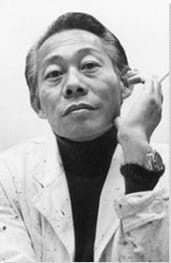Summary of Zao Wou-Ki
Having swapped Shanghai for Paris, Zao Wou-Ki's rose to become one of the most important artists on the world stage. A trailblazer in the overlapping of Eastern Asian and Western artistic traditions, he was a restless individual who, over a seventy-year career, established an artistic vocabulary that passed through figuration to full abstraction. He embraced different cultural identities without ever being indebted to one. It was during the 1960's and early 1970s that Wou-Ki's work reached its apex, with canvases of overwhelming scale and immersive emotional and spiritual intensity. Wou-Ki was the first ethnic Chinese member of the Académie des Beaux-Arts of France, and together with Chu Teh-Chun and Wu Guanzhong, was dubbed one of the "Three Musketeers" - the modern Chinese artists who trained in China and France.
Accomplishments
- Using oil paint, watercolor, and ink, Wou-Ki developed a striking signature style defined by strong contrasts in color and powerful linework. Blending gestural abstraction with traditional Chinese landscapeture, his most famous paintings capture fragments of larger scenes and possess a fluidity, transparency, and graceful luminosity that reflect the interior energies and impulses of the artist himself. Wou-Ki's art contemplates this grand narrative and invites his viewer to considerer their own place in the vastness of the universe.
- Wou-Ki's so-called "Hurricane Period" (roughly 1959-72) took its name from the grandiose (up to six meters in length) untamed style that synthesized Chinese and Western techniques. Marking a firm break from his earlier, and more symbolic "Paul Klee" and "Oracle Bone" periods, he abandoned the use of titles ("I only give the date. I am not a poet. Titles are restrictive", he said), and pioneered a form of transcendental abstraction that drew widespread critical acclaim at a time when the credentials of painterly abstraction were starting to be questioned.
- Wou-Ki did not want to be labelled a "Chinese painter" and the influence of Cézanne and Matisse is evident in his early portraits. It was through his discovery of Paul Klee, however, that his art truly started to come into his own. Inspired by Klee's abstract symbolism, Wou-Ki incorporated signs into his own paintings. In turn, this gave rise to his "Oracle Bone Period" which saw him embrace his heritage by incorporating ancient Chinese hieroglyphic scripts found on oracle bones into his works. Zao used the scope of the canvases to scatter these symbols across imaginary landscapes composed of dazzling colour contrasts.
- Although his body of work celebrated Chinese tradition, Wou-Ki's achievements were only latterly acknowledged in his country of birth. Having endured three decades of Maoist rule, and a "Cultural Revolution" that suppressed all art that did not conform to the Social Realist style, China would be slowly reborn as a major global player. Wou-Ki's contribution to modern Chinese culture (vis-à-vis China's contribution to the international art scene) was at last recognized by Chinese buyers and collectors who, emboldened by their country's new ascendancy as global economic force, were paying large sums to bring Wou-Ki's art home.
The Life of Zao Wou-Ki
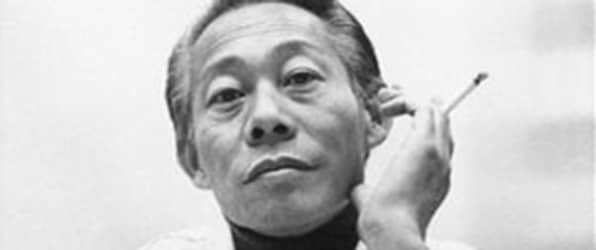
Art critic François Jacob wrote, "Zao Wou-Ki's paintings are ageless in their questioning of the universe. They present for us the birth of light, the origins of water, and beyond these turbulent upheavals of matter, a distant sense of the life energy coming into being in their midst."
Important Art by Zao Wou-Ki
Nature morte aux pommes
Nature morte aux pommes is one of the earliest existant paintings by the artist. It was produced soon after a 15-year-old Wou-Ki had enrolled in the Hangzhou School of Fine Arts. At Hangzhou, Wou-Ki fell under the influence of Ling Fengmian, who was somewhat radical artist-turned-teacher who promoted a marriage between modern Western, and traditional Chinese, techniques. The still-life speaks of both Wou-Ki's precocious talent and his life-long love of Paul Cézanne. The painting features apples and pears placed on a covered tabletop, but presented to the viewer with a subtle distortion of perspective. It also speaks to the artist's interest in expressing light and luminosity, which would become a hallmark of his art.
The painting is clearly indebted to the founder who he first encountered via reproductions he saw on postcards and in western magazines. Cézanne painted many still-lifes featuring fruits rendered with distorted perspective, and this work is emblematic of Wou-Ki's introduction to Western modernism through one of its greatest pioneers. Despite its nod to modernism (through the irregular placement of the fruits on the table) the painting remains one of the more naturalistic works in the artist oeuvre. Wou-Ki would in fact bookend his career with tributes to the French Post-Impressionist when, some seventy years after he painted this work, Wou-Ki confirmed his appreciation of the artist with his diptyque, Hommage à Cézanne, 06.11.2005 (2005), which was rendered in his mature abstract style.
Oil on canvas - Private collection
Untitled (Tennis Players)
Tennis Players is one of Wou-Ki's rare works produced while in Chongqing (the Hangzhou School of Fine Arts temporarily relocated there during the Sino-Japanese War (1937-45)). Wou-Ki was a keen tennis player, and it seems that even in times of war his favorite sport was not far from his thoughts. This delicate, otherworldly, painting features a rather quotidian scene rendered in a disquieting fashion. A house, trees, shed, table, chairs, and tennis court with two individuals, are realized in jarring hues with an uneven quality to the lines that offer views from various angles simultaneously. The tennis players themselves are rendered in a stick-figure fashion, distinguished only by color and the suggestion of a long feminine hairstyle through brown paint behind one of the players' head.
Historian Cheng Cheng writes, "The painting is an early example of Wou-Ki's signature technique of amalgamating Eastern and Western modes of painting. [...] the tennis court in the center of the picture seems to be suspended in the air and filled with green and yellow 'clouds.' At the two ends of the court, two simplified [..] images of a man and a woman are holding a racket against the net, one dressed in black and one in red. The sloping tennis court is sandwiched between a pavilion in the lower-left corner and a house in the upper right corner. The three different viewing angles do not conform to the principle of the widely applied line perspective. [...] The processing of the spatial relationships in the picture and the use of colors to create a dreamy sense are reminiscent of the pioneers of Western modern art such as Marc Chagall. During this period until the end of the second year of Zao Wou-ki's stay in Paris, his works were more figurative, and there was also Picasso's style applied inside his works".
Oil on muslin - Private collection
Portrait de ma Femme
This enigmatic portrait of Wou-Ki's wife Xie Jinglan (Lalan) was painted shortly after the couple's arrival in Paris. She sits on a stool, cradling her head in her hand and gazes off into space. Newly inspired by works of the great modernist masters, this painting is in dialogue with the work of the Fauvist Henri Matisse (who also painted many portraits of his wife). Art historian Michelle Yun writes, "Zao's artistic practice reflects attributes shared by many of his generation, namely the influence of the French modernist masters Paul Cezanne and Henri Matisse and the desire to create a dynamic visual language free from the constraints of representation".
What set the artist apart from his Western influences was his use of calligraphic line. In this image, the outline and detail in Lalan's dress result in the emergence of a new aesthetic. The dominance of primary colors in this work results in a strong visual contrast that makes the contours of Lalan's figure more pronounced. This painting marks the beginning of Wou-Ki's nascent artistic language, particularly noticeable here in the fluid nature of the lines in the floral pattern of the dress, the luminosity of the hues, and the contrasting colors. It also speaks to Wou-Ki's quick absorption of artistic trends and his skill in rendering figures, although he would soon abandon figuration altogether.
Oil on canvas - Private collection
Vent (Wind)
This is one of Wou-Ki's first abstract paintings. At this point in his career, Wou-Ki provides his viewer with a point of reference through the title. The movement of wind is suggested primarily through the fall of signs on the left side of the painting, as well as the overall ethereal tone and silvery, dark palette. Wou-Ki stated: "For hours, I would watch the passing of air over calm water, the breath of wind that shakes the birch and maple leaves...What I was trying to see was the space....".
This work was created after his discovery of the work of Paul Klee. It was an epiphany for the artist who duly abandoned figuration for abstraction. Apart from being one of his first abstract paintings, it is also one of the first works he created with more overt allusions to his heritage, indicated through the dark calligraphic brushstrokes rendered in the foreground of the painting, which are underscored by the bursts of white, gray, blue, and green. Apart from these strokes, the archaic nature of the signs on the left side recall oracle bones, a pictographic form of ancient Chinese calligraphy inspired by oracle script used to ask deities about the future during the Shang dynasty. These signs would become even more abstracted over the coming years, ultimately dispersing and becoming one with the background of the painting. What is also evident in this painting, and an element which would become more pronounced in subsequent works, is the sense of Wou-Ki's interest in imparting a sense of mysticism undergirded by nature and an enveloping sense of an environment conducive to meditation. The Zao Wou-Ki Foundation Writes, "Vent is often considered as his first abstract painting. The figurative element has almost totally disappeared, and the long cascade of invented signs has no graphical meaning, evoking instead an impalpable element, the passing wind".
Oil on canvas - Centre de Pompidou, Paris
Sans Titre
Art critic Alain R. Truong writes, "Zao Wou-ki experienced emotional turmoil in the late 1950s and decided to go on an extended journey, during which he became deeply unsettled by the post-war American abstract expressionist movement. This inspired his artistic direction over the following decade. [The art he produced in 1962 was] representative of Zao's artistic rebirth, marking the beginning of a period that would come to be regarded as the pinnacle of his career". Indeed, while Vent signaled Wou-Ki's move towards pure abstraction, his Sans Titre (Untitled) series is representative of his fully matured abstract style.
Wou-Ki's Sans Titre series marks the point at which the artist fully synthesized his Western avant-garde leanings with his own emotions and the spirit of ancient Chinese landscapes. In this work he explores ideas of balance and texture using oil paint, watercolor, and ink. The result is indicative of a signature style that is expressed through a combination of passionate linework and gestural abstraction. Art critic Charles A. Riley writes, "While he has eliminated an allusion to subject matter through not titling the work, the painting still evokes the energy of nature. With the reduction of forms to a single color plane and spontaneous, calligraphic allusions to traditional Chinese painting, this work is a quintessential example of what came to define Wou-Ki's work, exemplifying his statement "Everybody is bound by a tradition. I am bound by two". In 2017 New York's Lévy Gorvy Gallery, ran an exhibition entitled, "De Kooning & Zao Wou-Ki Trace Paths to Abstraction". In his catalogue essay, Dominique de Villepin writes that "these 'involuntary heirs of two traditions of landscape painting' found a way while living in exile - de Kooning the Dutchman in New York, Zao the Chinese in Paris - to soar free of the constraints of 'stifling tradition'".
Oil and ink on canvas - Centre de Pompidou, Paris
Hommage à Edgar Varèse, 25.10.64
This painting, produced in a phase that is sometimes referred to as the artist's "Hurricane Period", was first in a series of large canvases Wou-Ki begun in the late 1950s/early 1960s and is one of many abstract paintings the artist created in honor of friends and/or people he admired (such as Henri Matisse). He painted it a year before the death of Edgar Varèse, an avant-garde musician he met through his friend, the Belgian poet and painter, Henri Michaux, in 1954. Soon after that meeting, Wou-Ki attended the premiere of Varèse's, Déserts, at the Théâtre des Champs-Élysées. The performance, which incorporated electronic sounds, was the cause of one of the great scandals in the history of musical performance. In a 1955 radio interview, Varèse defined his music as a "movement of planes and masses of sound, varying in intensity and density. When the sounds collide, they generate phenomena of penetration or repulsion". The Zao Wou-Ki Foundation states that "like Varèse, Zao Wou-Ki plays with dynamic, rhythmical stresses and shifting masses of colour to create interpenetrating spaces opening onto mystery. Using a range of techniques, from broad brush strokes and impasto to drips, splashes and sgraffito, he stages an epic pictorial drama, a whirlwind, a battle between light and darkness".
Speaking of the scale of these works, Wou-Ki stated, "Large surfaces demanded that I fight against space. I was compelled, given an imperative, to fill the surface, to enliven it and yield to it. I was trying to express movement, its nagging slowness, its violent outbursts. I wanted to make the surface of the canvas vibrate through contrast, or through the quivering variations of a single colour. I was searching for a radiating centre, using colour to pierce beneath the surface. In the mayhem of colours and the intricacy of strokes so forceful they were almost smeared onto the canvas, I felt at ease. At the time, I had not yet discerned how extremely difficult it was to paint a void; I was more attracted to violence and noise than to silence. Defeating the surface had become my obsession, a challenge that raised numerous issues for me...In this way, I had moved on from painting emotions to painting space".
Sotheby's states "By the Hurricane Period, the artist's use of colour had grown bolder, more daring, often introducing complementary colours within the tableau of the dominant colour tone, a practice that marvellously enriched the world of the canvas. [...] These deep and rich colours, intersecting and dancing amid the magnificent torrent of energy and vigour, seem to be a symbol of the post-war avant-garde spirit, flourishing and full of vitality, standing upon the shoulders of its artistic predecessors, revealing heights heretofore unseen".
Oil on canvas - Musée cantonnal des beaux-arts, Lausanne
Hommage à Françoise, 23.10.2003
This triptych, the format of which holds historical significance in Asian and Western cultures, is dedicated to Wou-Ki's third wife. Its scale recalls his experimentation with larger proportions in the 1960s, here requiring the involvement of one's whole body, suggesting Wou-Ki desired the viewer to project their own self into the canvas. Wou-Ki melds abstraction of nature with a composition recalling traditional Chinese landscape formats. As is typical of his unique merging of mediums, the oil appears airy, taking on a watercolor-like wash that results in the sensation of lightness. With its bright red composition, this work is replete with a sense of passion and happiness. Jonathan Hay, a professor in Chinese art history at New York University sees in his works of this period, "a quality of gesture that is stripped of all hurriedness and creates [...] a luminosity extending from infinite softness to enveloping darkness, a topography of form that opens itself to stillness and silence".
Curator Dominique de Villepin says of Wou-Ki's late period works, "[he aimed at] filling the cracks between the real and art, between beauty and truth, thus allowing the painting to become a work for the peace of mind, promising the reconciliation of man with what surrounds him. [...] This very peace that bursts in the triptych Hommage à Françoise - Homage to Françoise- 23.10.2003, in the form of a confidence and happiness conquered over large strips of pinks and reds streaked with thin dark veins, black and purple. This extraordinary lyrical painting, saturated with emotions and colors, sounds like a symphony to life and joy. Everything is solved with delicacy and subtlety, the time for peace is finally back, the memory of the fierce fights seem to have vanished in the dawn that already turns blue in the sun glows. This painting stops us, invites us, shares with us a temporary world order".
During the Maoist regime (1949-76), Chinese artists were expected to create art that reflected the revolutionary doctrine by creating "art for the people". Professional artists, (especially ink painters who ignored the edict to paint in the Social Realist style) were amongst millions who endured persecution, imprisonment and/or death. In the manner of the Nazi's degenerate art exhibitions, many works by Chinese artists were included in "black painting" exhibitions as examples of works that did not reflect the political ideology of the state. However, in the 1990s, Wou-Ki, who was fully committed to the idea that his art belonged to the world at large, saw his contribution to modern Chinese culture finally acknowledged in his country of birth. Buoyed by China's emergence as global economic force, dealers were bidding large sums to bring his art home.
Oil on canvas - Private collection
Biography of Zao Wou-Ki
Childhood
T'chao (he took the name Zao when he arrived in Paris) Wou-Ki was born in Beijing into a prosperous and well-educated family descended from the Song dynasty (an imperial dynasty ruling between 960 and 1279). Following the Chinese custom that a child's name determines their future luck and prosperity, his parents named their son Wou-Ki which translates into English as "no limits" or "no boundaries". A few months after his birth, the family relocated to Nantong, a prefecture town north of Shanghai, where his father, Chao Hansheng, took on work as a banker (working his way up from clerk to general manager of Shanghai Commercial Bank, the largest private bank in China). He completed primary school, and three years of secondary education, at a Western-style schools, learning English from kindergarten age. Wou-Ki was a strong student and took especially to literature, history and art.
Wou-Ki's father, who was himself a "Sunday painter", encouraged his son to explore art from the age of ten (his mother was less than enthusiastic about Wou-Ki's hobby, however, and was alarmed when he painted on one of her prized 18th century plates). It was Wou-Ki's grandfather who taught him to draw the characters of the Chinese alphabet and the basics for the ancient art of calligraphy. During this period Wou-Ki became influenced by Cézanne, Matisse and Picasso, whose works he encountered via postcards his uncle brought back from Paris, and from reproductions published in American magazines such as Life, Harper's Bazaar and Vogue that he bought in bookshops in the French Concession (a French residential and retail district of Shanghai). He also bought painted copies of works by the likes of Matisse, Rembrandt, Poussin, Renoir, and Modigliani.
Education and Early Training
In 1935, Wou-Ki enrolled in the Hangzhou School of Fine Arts (HSFA), where he studied traditional Chinese painting and Western techniques. But, as historian Melissa Walt, writes, "The Sino-Japanese War of 1937-1945 upended life in China, and Zao's privileged upbringing did not shield him from the uncertainty of those perilous years. As hostilities with Japan increased, China witnessed a mass migration of the populace, as millions sought a degree of security by moving to the country's interior. The faculty and students of the art academy relocated to the relative safety of Chongqing in Sichuan province, where Zao spent the remainder of the war years. After graduating in 1941, Zao became a member of the academy's teaching faculty. In Chongqing, he taught, painted, mounted his first exhibitions, and made important connections that shaped his future and career".
Wou-Ki benefited greatly from the tutelage of Ling Fengmian, whose pioneering work sought ways of marrying modern Western techniques with traditional Chinese forms. It was while studying at Hangzhou, that he met Xie Jinglan, a fellow student taking classes in the music department. They fell in love and married in 1941. They had a son, Zhao, soon after. The HSFA returned to its home in Hangzhou after the end of the war, but by now Wou-Ki had his sights set on Paris where he planned to stay for just two years.
On February 26th, 1948, and urged on by Vadime Elisseeff, the Cultural Attaché of the French Embassy in China, who had taken 20 Wou-Ki's works to Paris to exhibit at the Cernuschi Museum's Exposition de peintures chinoises contemporaines (Exhibition of Contemporary Chinese Painters), Wou-Ki and Jinglan left Shanghai for Paris. After 36 days at sea, they reached Marseille, before traveling on to the French capital (legend has it that Wou-Ki spent the entirety of his first afternoon in Paris wandering spellbound through the corridors of the Louvre). However, as Walt writes, "The course of their two-year adventure was altered by the shifting realities of post-1949 China". These "shifting realities" refered to the formation, in 1949, of the People's Republic of China, led by Mao Zedong (Chairman Mao). Under the Maoist regime, all art showing Western influences was denounced. Indeed, his friend and mentor, Fengmian, was ousted from his presidential post at HSFA. Walt writes, "Zao's father urged his son to remain in France, even though doing so came at considerable personal cost - especially in the separation from his young son, who had remained in China with Zao's parents".
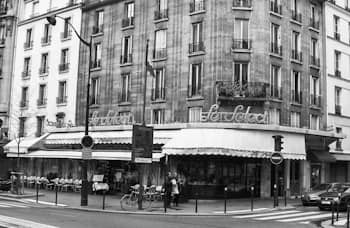
Wou-Ki relished his new exposure to Western art and culture. He took a small studio next to Alberto Giacometti, and attended French language lessons at the Alliance Française. He enrolled at the Académie de la Grande Chaumière where he learned about European art, and soon acquired a new group of friends included American artists Sam Francis, Norman Bluhm, and Joan Mitchell, Canadian artist Jean-Paul Riopelle, Portuguese painter Maria Helena Vieira da Silva, German painter Hans Hartung and French painter Pierre Soulages.
Wou-Ki also rediscovered his passion for lithography which was undergoing something of a creative resurgence at the time. He created eight lithographs in 1950 which were exhibited by the publisher Robert J. Godet. These drew the attention of the poet Henri Michaux, who wrote eight poems to accompany them. The collaboration (which marked the beginnings of a lifelong friendship) was published by Godet in a book titled, Lecture par Henri Michaux de huit lithographs de Zao Wou-Ki (1950). Michaux also introduced Wou-Ki to the gallerist Pierre Loeb, with whom he would exhibit until 1957. Meanwhile, Wou-Ki became fascinated with Shang-dynasty oracle bone script (an ancient form of Chinese writing, dating as far back to around 1500 BC) and started to produce works featuring simple figures evocative of ancient rock art (petroglyphs). In 1951, Wou-Ki became closely acquainted with the architect I.M. Pei, with whom he would collaborate on many projects in the future.
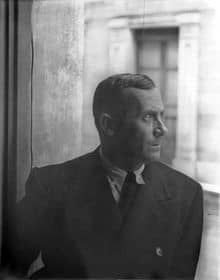
In 1952, Wou-Ki traveled to Switzerland for a solo exhibition, and while there, discovered the work of Paul Klee. His "discovery" would initiate his own shift in style. Wou-Ki declared, "No more still lifes or flowers, I am aiming for an imaginary and indecipherable new writing". On his return to Pris - via short tours of Italy and Spain - he formed a close friendship with Joan Miró. Arts critic Yann Hendgen writes, "Wou-Ki and Joan Miró first met in 1952 at Galerie Pierre in Paris [and that] Miró came to the openings of all his exhibitions [at the gallery]. Zao Wou-Ki was very touched by this sign of friendship [...] Although 27 years separate them in age, they frequented the same print workshops, such as that of Madeleine Lacourière in Paris and the Polígrafa studio in Barcelona. They also had many mutual friends, such as Eduardo Chillida and Antoni Tàpies, the museum director Jean Leymarie [and] the art historian Kosme de Barañano".
Mature Period
Suffering emotionally from the breakdown of his marriage in 1957, Wou-Ki visited his brother Wu-Wai, who lived in New Jersey with his wife Phoebe. Wou-Ki and Phoebe, who had majored in art history and French, went into the New York City together to visit museums and galleries. In New York, he met the avant-garde art dealer Sammuel Kootz. Over the years The Kootz Gallery had exhibited work by the likes of Picasso, Georges Braque, Fernand Léger, Arshile Gorky, David Hare, Tony Rosenthal, and Pierre Soulages, and Wou-Ki worked with Kootz until the closure of the gallery in 1966. Wou-Ki became well connected socially, too, befriending Franz Kline, Philip Guston, Adolph Gottlieb, William Baziotes, Saul Steinberg, and Hans Hofmann. He took time to travel to the West Coast, Hawaii, and then on to Tokyo, and Hong Kong. While in Hong Kong, he met May-Kan Chan, "an actress of extraordinary beauty", and the two married in 1958. Sadly, May-Kan suffered from very poor health and Wou-Ki devoted himself to her care. For the next decade or so Wou-Ki's only form of refuge for his domestic troubles, which he likened to living "in the middle of a storm", came from his art.
At the end of 1959, Wou-Ki bought a warehouse in the Montparnasse district of Paris, which was converted into a studio by architect Georges Johannet. It was Kootz who had first encouraged him to make larger-scale paintings, and with his Paris atelier up-and-running, Wou-Ki had the room to work on these grander, "Hurricane" canvases. But, as Sotheby's points out, given his difficult personal circumstances, the Hurricane paintings "presented a tremendous challenge to the Zao Wou-Ki's energy and stamina, with the artist meeting success only under the most optimal circumstances. In the thirteen years of the Hurricane Period, 1964 was the year in which the artist [who completed just nine canvases] had achieved a physical and spiritual equilibrium, the year of his artistic peak". However, in 1964 Wou-Ki also produced ten lithographs to illustrate La Tentation de l'Occident (Temptation of the West), by Andre Malraux, who was the French Minister of Culture at that time. With Malraux's sponsorship, he would be granted French nationality in the same year. Wou-Ki, who had befriended the composer in the 1950s, also found the time and energy to paint a canvas in homage to Edgar Varèse the year before his death (in 1965). As the decade progressed, Wou-Ki become increasingly interested in watercolors. The medium, which he would work with throughout the rest of his career, played an increasingly important role in his output. Wou-Ki was attracted to the medium because it allowed for more spontaneity, and a greater translucency, than he could achieve with oils alone.
Late Period
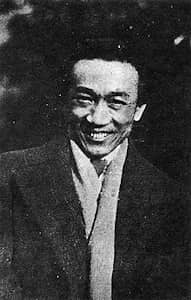
May-Kan lost her battle with illness in 1972. Wou-Ki's grief was further deepened when his mother died soon after. The passing of his mother initiated Wou-Ki's return to Shanghai where he reunited with his family for the first time in 24 years. While in Shanghai (and away from his studio), Wou-Ki refamiliarized with the Chinese brush-and-ink tradition, which had been officially outlawed in 1966 with the commencement of the decade-long Cultural Revolution. Oil painting replaced brush-and-ink painting which had been the most revered art form in China for over one thousand years, while the heroes of the Maoist revolution (workers, soldiers, and peasants) replaced more benign subject matter such as landscapes, birds, and florae. Christie's writes that once back in Paris (where he was free to paint as he wished), Wou-Ki "discovered a creative fascination for the spreading haloes of color, the drips of ink, and the variety of shadings ink produces, depending on how dense or light, or wet or dry it is. These shifting patterns of varied tones, their countless layers, and the sense of forms hidden in seemingly amorphous patterns, seemed to inject new creative impetus into his work".
Back in 1970, the architect Josep Lluís Sert, who had designed Miró's studio in Palma de Mallorca in 1956, contacted Wou-Ki informing him that he had bought a hill in Ibiza on which he planned to build six houses. Wou-Ki agreed to buy one without even seeing the blueprints. Wou-Ki moved into his new house in 1972 and built a new studio there a few years later (according to Sert's original plans). After 1973, he spent long periods of time in Ibiza (in winter and summer months) with curator Françoise Marquet, whom he married in 1977. Around this time, the New York art dealer Pierre Matisse visited Wou-Ki's studio and offered to show paintings and drawings at his gallery. It was an important intervention for Wou-Ki since his work had not been seen in the city since the closure of Kootz's gallery (in 1966).
In 1979, the Chiang Ching Dance Company (formed in 1973 by Chiang Ching, a graduate of the Peking Academy of Dance who had settled in New York) worked with the artist to use his paintings as backdrops (in the form of slides) to performances . In 1979, his old friend, Pei, invited Wou-Ki to produce two large-scale ink works for his newly designed Fragrant Hill Hotel in Beijing. From 1980-1984, he taught mural painting at the Ecole nationale superieure des arts decoratifs. In 1982, Wou-Ki arranged a meeting between Pei and Emile Biasini, France's minister of culture. That meeting would lead ultimately to the construction of Pei's famous glass entrance pyramids in the courtyard of the Louvre. In 1985, Wou-Ki and Marquet were invited to teach at his alma mater, HSFA. Wou-Ki also became friendly with Jacques Chirac. The French President had become one of his biggest fans, even writing the preface to the catalogue for his first major Chinese retrospective in 1998 in Shanghai. 1998 also saw the opening of Lisbon's Oriente subway station for which Wou-Ki had produced the ceramic wall panel.
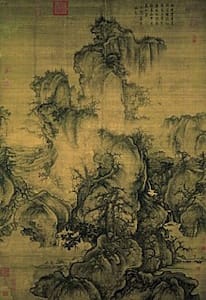
Commenting on his 2002 painting, 24.12. 2002 Diptyque, Christies writes, "When Zao resumed painting large-scale canvases, his style witnessed a dramatic shift, gaining a new translucence and vibrancy inspired directly by his work with inks". These works evoked something of the of the majesty of the landscapes of the Song Dynasty painter, Guo Xi and his delicate use of ink washes and formless brushstrokes. Christie's adds, "[this] monumental work [...] was completed on Christmas Eve, just days after Zao Wou-ki had been elected to join the French Academy of Fine Arts. Already well past the age of 70 when he painted it, Zao nevertheless filled the canvas with a youthful energy - layers of turquoise blue and fuchsia combine with washes of warm brown, in a manner far different from early works in which he built up thick impastos of pigment in strong brushstrokes. With his palette liberated, Zao's work gained a lively playfulness in his twilight years. His style becomes lighter and gauzier, and the rainbow of tones fold over and into each other, filled with light. If his previous works are largely concerned with energy and movement, his late works evoke airy abstract spaces and exude the aura of serenity that characterised Zao's persona".
In 2006 Chirac appointed Zao to the Legion of Honour, France's highest recognition. By 2008, he had stopped painting in oils in favor of watercolor, a medium in which he continued to paint until 2010. Wou-Ki passed away in hospital in Nyon, Switzerland in 2013. In accordance with his wishes, he was interred at Montparnasse cemetery.
The Legacy of Zao Wou-Ki
Wou-Ki's fusion of Eastern Asian and Western elements in painting was unparalleled. It is true that other abstract artists of his generation, such as Franz Kline and Mark Tobey, were interested in cross-cultural projects, but Wou-Ki was able to draw heavily on his dual heritage. On arriving in Europe, he had sought to put some distance between himself and the China of his upbringing before realizing he could not escape his roots: "Although the influence of Paris is undeniable in all my training as an artist", he stated, "I also wish to say that I have gradually rediscovered China it has affirmed itself as my deeper personality [...] Paradoxically, perhaps, it is to Paris I owe this return to my deepest origins". An indicator of his standing can be gauged in the company he kept. As Christie's writes, "He mixed with the greatest artists of the day [and] cultivated an extensive circle of friendships with fellow artists and influential cultural figures during his lifetime."
Art historian Bernard Dorival sums up the artist's career thus: "Wou-Ki is one of the most exquisite painters of our time and the most original. He has certainly understood how to blend the most authentic Chinese tradition...of the great art of tenth-century China, with modern Western painting, which are really not so far apart. This union was made painlessly, quite naturally: a certain Paul Klee had already accepted it...and ancient Eastern art meets what is most vibrant, youngest, and freshest in the modern West, to enrich Zao Wou-Ki's art and give him his unique personality and rare quality".
Influences and Connections

-
![Alberto Giacometti]() Alberto Giacometti
Alberto Giacometti -
![Joan Miró]() Joan Miró
Joan Miró -
![Joan Mitchell]() Joan Mitchell
Joan Mitchell ![Jean-Paul Riopelle]() Jean-Paul Riopelle
Jean-Paul Riopelle- Henri Michaux
-
![Impressionism]() Impressionism
Impressionism -
![Abstract Expressionism]() Abstract Expressionism
Abstract Expressionism - Traditional Chinese Painting
- Calligraphy
- Morita Shiryu
- Inoue Yuichi
-
![Alberto Giacometti]() Alberto Giacometti
Alberto Giacometti -
![Joan Miró]() Joan Miró
Joan Miró -
![Joan Mitchell]() Joan Mitchell
Joan Mitchell ![Jean-Paul Riopelle]() Jean-Paul Riopelle
Jean-Paul Riopelle- Henri Michaux
- Post-war Abstraction
- Eastern and Western Fusion
 Ask The Art Story AI
Ask The Art Story AI